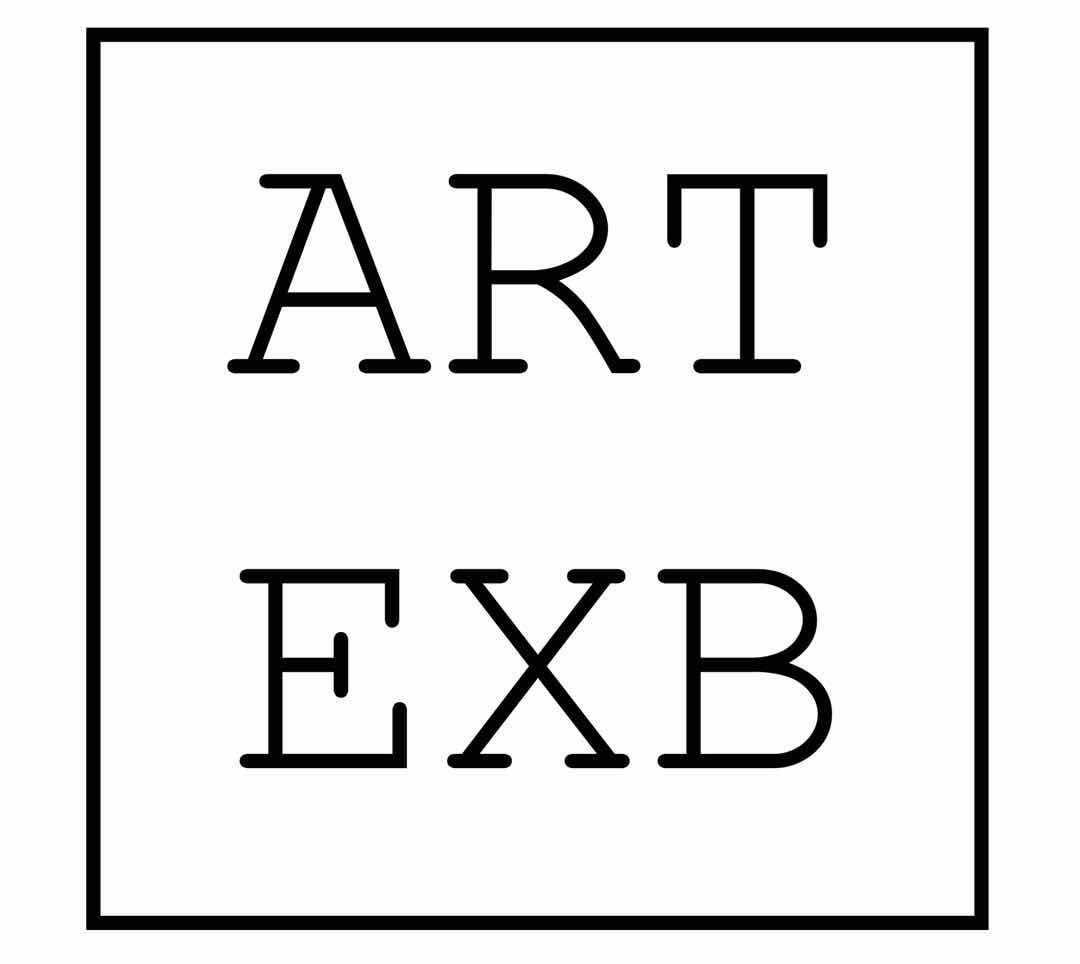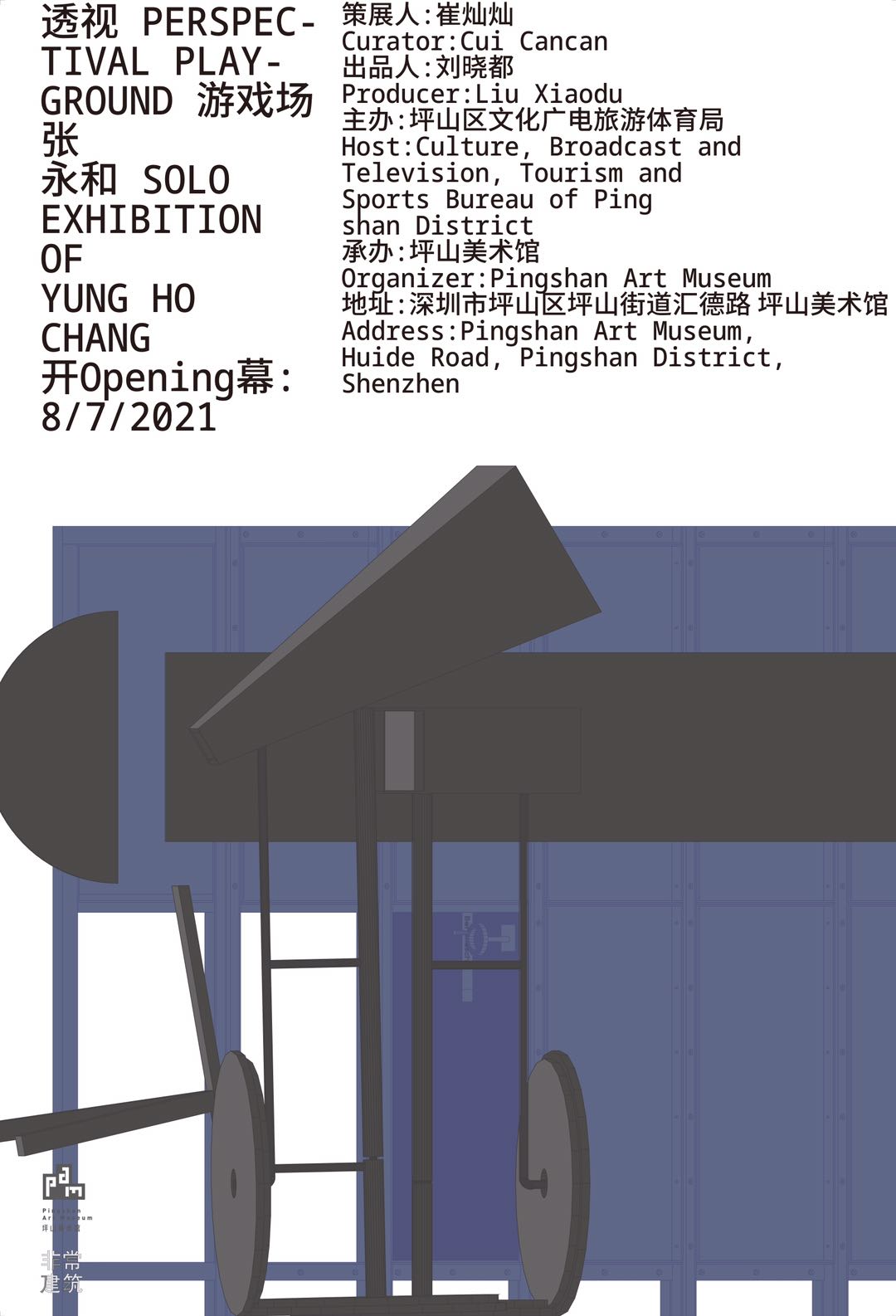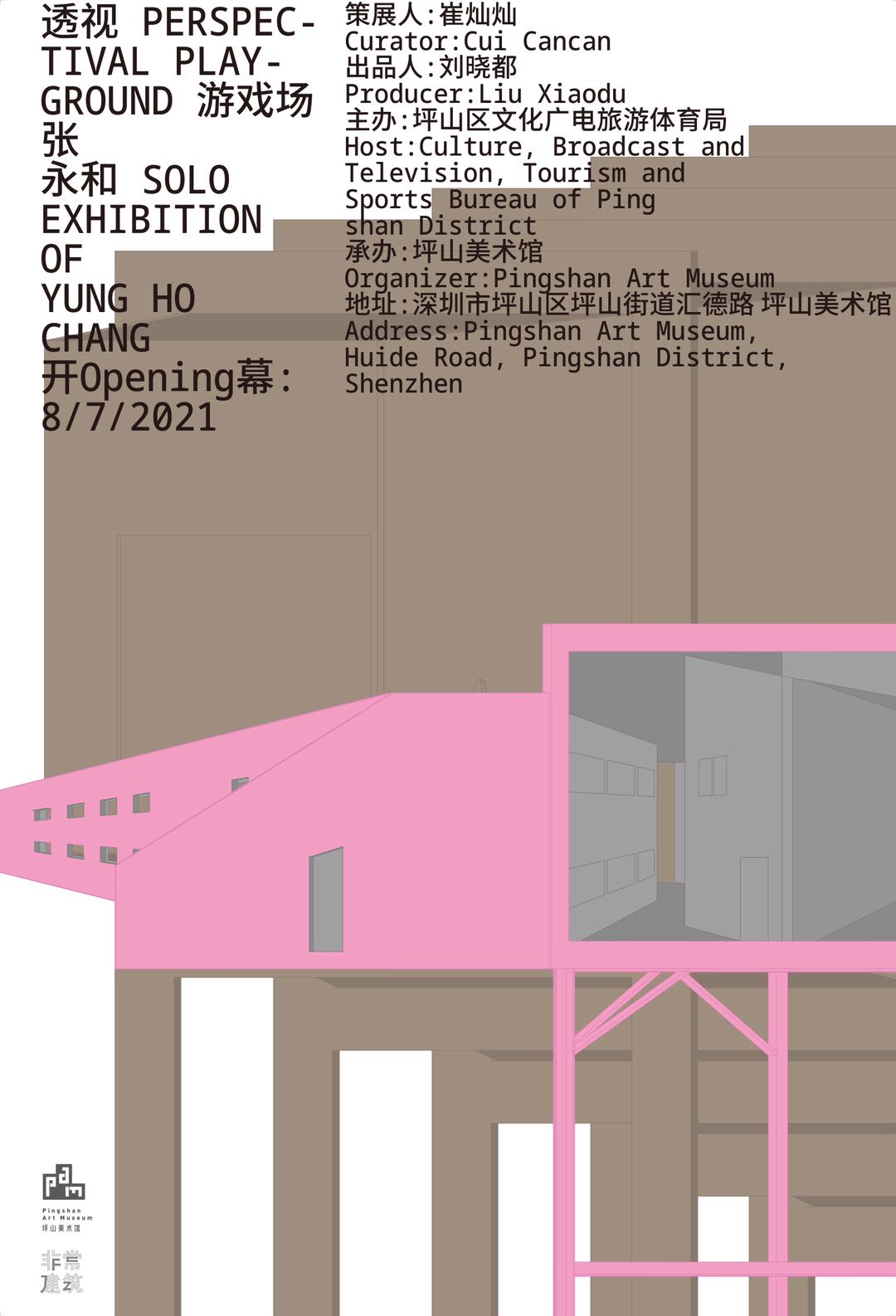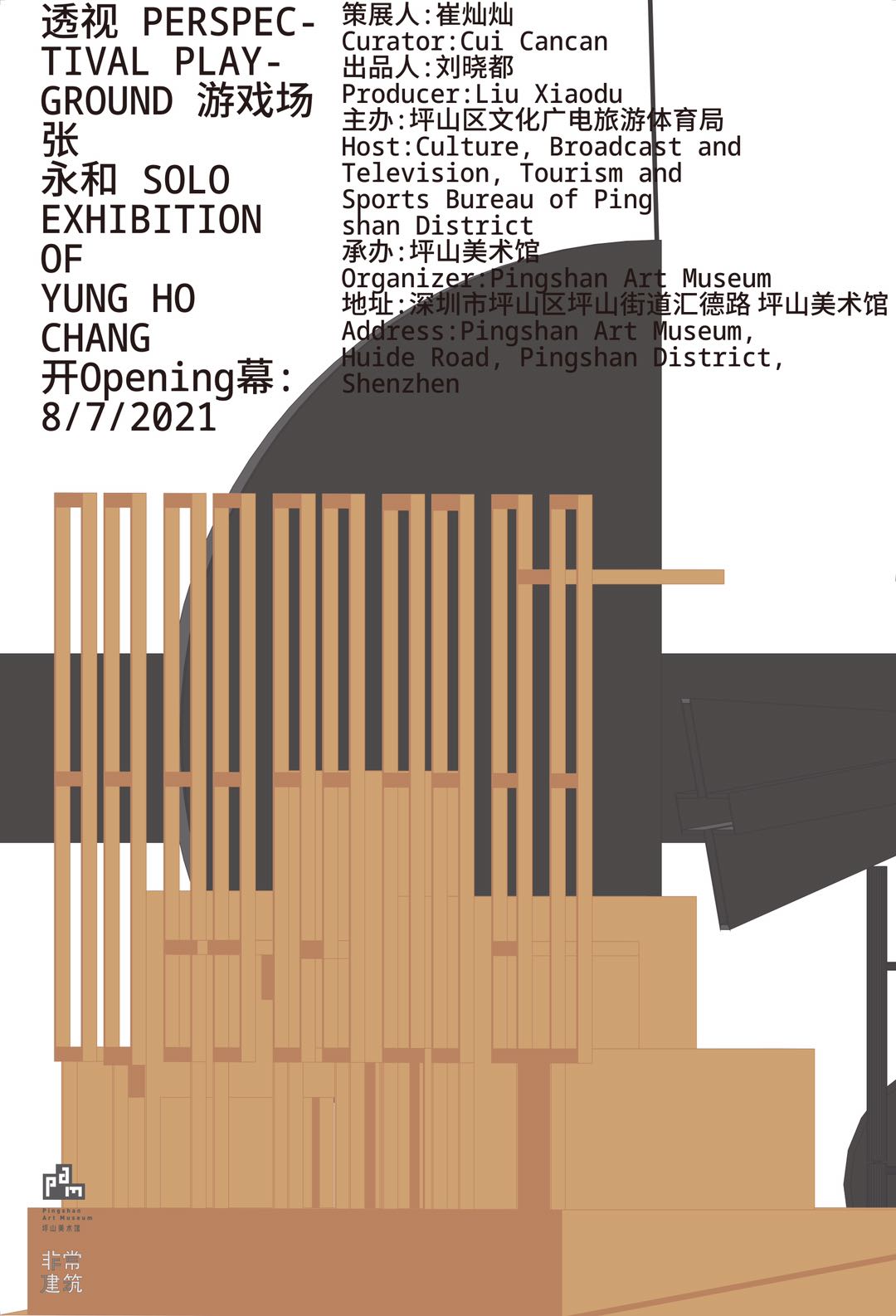然而,这些装置作品又非全然的 “艺术”,它是理性的、设计的,而非想象的。它们起源于从透视学开始的启蒙的求知精神,因为需要记录透视的知识,使得描述的手段必须精准。它们并非是 “画” 或是 “雕” 出来的,而是求出来的。 精准无误的手段,严丝合缝的创造与求证,使得这些作品和艺术创作(装置、雕塑、绘画中的透视),有着截然不同的目的、功能和意义。
张永和在各个时代的电影、绘画和建筑中穿梭,寻找从传统透视中突围的空间感受,寻求通过空间设计时间的方法,时间应该如何度过,又在何处穿越?《寻找系列》成了建筑和艺术的中间地带,它以别样的方式,探讨人世间的空间意识,启发人们对空间,对自我,对存在的思考。
策展人:崔灿灿
“Perspectival Playground” is different from traditional solo exhibitions of architects as it does not display models, drawings and renderings as usual. Instead, it presents another clue offered by Architect Yung Ho Chang. Through the space design and installations, the playground of “perspective”and “seeing” is thereby established.
As the most important architect in China, Yung Ho Chang has not only designed many eye-catching architectural works, but also participated in a large number of art exhibitions and theoretical studies with a complex system of his own, covering from the changes in Asian urbanization to the experimentation of exhibition construction. The driving force for the development of this system lies in the architect’s broad vision and diversified exploration. He constantly returns to the starting point of architecture, reflecting on and reconstructing all basic elements, thus opening up the possibility to re-understand architecture.
The five installations in the exhibition of “Looking for” are presenting a brief history of perspective. The work begins with the experiment regarding linear perspective carried out in the 14th century by Italian Architect Filippo Brunelleschi who pioneered the era of constructing spaces with scientific methods. It is the beginning of the entire exhibition and also a metaphor for Yung Ho Chang’s working routines. Here, he has paved a way for us to look for “perspective”.
Down the journey led by Yung Ho Chang, we can look for the one-point perspective created by the Architect Andrea Palladio in the 16th century and the complicated experience of abstract urban spaces in current days; we can take a guess about the camera obscura used by Vermeer when he painted in the 17th century; we can learn from the Painter Kazimir Malevich in the early 20th century to create 6 rotatable viewfinders; we can also find the perspective relationship between windows, rooms, and furniture in the movie “Rear Window” produced by Alfred Hitchcock, and create a brand new “Window”thereof.
Pieces in “Looking for” have formed a space game pointing to the history of the architecture itself with the imagination of the possibility for perspective. In the game, the time and space created by architects and artists from different eras have never been interrupted. They’re mixed together, with no distinction between ancient and modern, the past and the present.
In other words, “Looking for” has intercepted a static experience through precise construction, designing multiple channels for “seeing”, which makes originally abstract motion clear and concrete. We complete the process of discovery by “seeing”, which, in turn, is merged with here.
But these five works are different from traditional architecture as they are creating a pure spatial game and experiment. “Looking for” brings us back to the root of architecture by removing the practicality and theme, returning to the core elements that form the theme. That being said, these “installations”are not models, nor are they tools and paths for the construction. They exist independently, with their own order, destination and meaning.
However, these installations are not entirely “art” either, for they are rationally designed rather than merely imagined. They’re derived from the pursuit for knowledge starting from perspective studies in the Enlightenment. Everything about perspective needs to be recorded, so the means of description must be accurate. They are not “painted” or “carved”, but calculated. It is the accurate means and tightly knitted creation and verification that endow these works with purposes, functions and meanings completely different from artistic creations (perspective in installations, sculptures, paintings).
Yung Ho Chang travels through movies, paintings, and architectures of various eras, looking for a space experience that can stand out from traditional perspectives, and seeking ways to design time through space. How should time be spent and where should it travel through? “Looking for” has become the intermediate zone between architecture and art, inspiring people to think about space, self, and existence in a different way during the exploration of the space consciousness in the human world.
Cui Cancan, Curator



